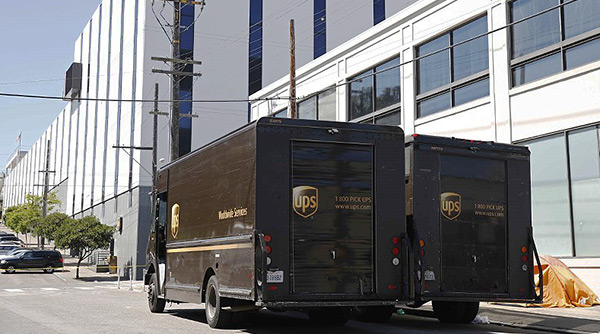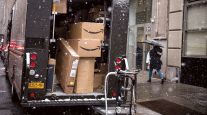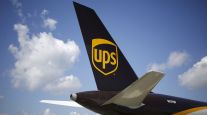UPS Drivers Reluctant to Return to Site of San Francisco Shooting Rampage

Most of the drivers won’t even enter the building.
The trauma from a mass shooting at a United Parcel Service distribution center has made going back to work almost unimaginable for many of the nearly 40 workers who witnessed the June 14 massacre.
San Francisco, though, has been prepared for helping shell-shocked survivors of the rampage that left three UPS drivers and the shooter dead.
As tactical police officers confronted 38-year-old Jimmy Chanh Lam inside the Potrero Hill building after he killed his co-workers, a team of service providers specially trained to assist in mass shootings rushed to the scene. Within half an hour of the first police call, they were helping drivers who had fled the building when the shooting started.
“Law enforcement’s role is to provide safety and contain the incident. Our role is to support and intervene for the victims,” said Dr. Gena Castro Rodriguez, chief of the victim services division of the San Francisco district attorney’s office.
Her group is one of the first in the state specially trained to respond to mass-casualty events. District Attorney George Gascón’s office created the unit after the December 2015 attack in San Bernardino that left 14 people dead at a government office’s Christmas party.
As of last week, only five of the UPS drivers who witnessed the shooting at the UPS center in San Francisco had returned to work, said Joe Cilia, the secretary-treasurer for Teamsters Local 2785, the drivers’ union.
“People are afraid,” he said. “It’s tough. People are starting to wonder what’s going to happen going forward, and they’re not able to go back to work.”
The first 30 days after an incident such as a mass shooting are a window during which trauma symptoms can worsen into post-traumatic stress disorder, Rodriguez said. Grief counselors, she said, can help survivors regain a sense of stability.
Leopold Parker, 53, was in the drivers’ morning meeting at the Potrero Hill building when Lam started shooting. He isn’t back on the job at UPS, but he’s been back at the office to speak with the counselors, which, he said, “has helped a lot.”
The veteran driver saw Lam shoot the first victim, Benson Louie, right in front of him.
“So far, I’m doing OK,” Parker said. “I’m just worried about our younger drivers. I don’t know what those guys are going through. It’s been bad enough for me seeing a guy take a bullet.”
While many drivers are working through the shock of what happened that day, they’re also disturbed that they will probably never know why Lam turned on his colleagues.
“In some cases, the justice system gives some closure,” Rodriguez said during an interview inside an airy lounge set up for crime victims on the fourth floor of San Francisco’s Hall of Justice.
“In this case, because the shooter is also deceased, we’re never going to really know what the motivation was or what the thoughts were, so that’s going to linger for some families,” she said, as Pink, a 2-year-old English Labrador therapy dog, rested at her feet.
Pink, who joined the district attorney’s office in November, has been trained to provide affection and comfort to victims and witnesses traumatized by crimes such as the UPS shooting, usually working in group settings or in private therapeutic session.
The days ahead for the shooting survivors won’t be easy. But because her team responded to the scene immediately, Rodriguez believes it’s in a better position to help them.
She began working soon after the San Bernardino attack to establish a citywide framework to handle survivors of mass shootings. Law enforcement and emergency personnel have long practiced for such attacks in exercises such as Urban Shield in Alameda County, but less attention has been paid to dealing with the psychological fallout.
“We know these events are increasing,” Rodriguez said. “We need to be prepared so we’re not always responding in the aftermath. We want to help people as quickly as we can.”
At the scene of the UPS shootings, Rodriguez’s team served as a go-between for survivors and their families as the chaos unfolded. The team was ready with financial resources and on-site counseling.
While they haven’t gone back to work, many of the drivers have attended funerals for two of the three men killed in the attack. In addition to Louie, longtime drivers Michael Lefiti, 46, of Hercules, Calif., and Wayne Chan, 56, of San Francisco, were killed. All of the victims will be remembered in a public ceremony at 2 p.m. July 9 at City Hall.
As the drivers trickle back to work, they’ll have to decide where they’re going to have their morning meeting.
Distributed by Tribune Content Agency, LLC




